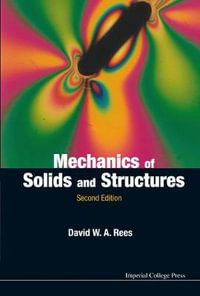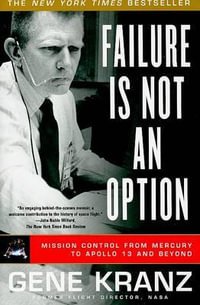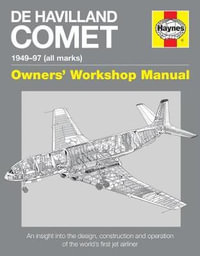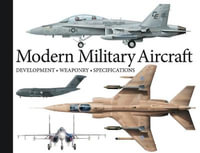| Motivation and Background | p. 1 |
| Overview | p. 1 |
| Motivation | p. 2 |
| Evolution of Small-Scale Rotorcraft UAVs | p. 4 |
| Rotorcraft Modeling Challenges | p. 6 |
| Description of the Flight-Test Vehicles | p. 8 |
| Carnegie Mellon's Yamaha R-50 | p. 8 |
| MIT's X-Cell .60 Helicopter | p. 12 |
| Technical Background | p. 13 |
| Rotorcraft Modeling | p. 13 |
| Rotorcraft Control | p. 20 |
| Material Preview | p. 25 |
| Statement of Objectives | p. 25 |
| Book Outline | p. 25 |
| Frequency Response System Identification | p. 29 |
| System Identification Modeling | p. 29 |
| Linear Frequency-Domain Identification | p. 31 |
| Overview | p. 32 |
| Theoretical Backround | p. 34 |
| Model Accuracy Requirements | p. 38 |
| Development of a Parameterized Model | p. 39 |
| Parameter Identification | p. 39 |
| CIFER System Identification Tool | p. 40 |
| Flight Experiments and Data Collection | p. 41 |
| General Flight-Testing Rules | p. 41 |
| Description of the R-50 Flight Test | p. 45 |
| Analysis of the Estimated Frequency Responses | p. 46 |
| Development of the Identification Model | p. 53 |
| Rigid-Body Equations of Motion | p. 54 |
| Rigid-Body Equations of Motion | p. 55 |
| Rigid-Body Stability Derivatives Model | p. 58 |
| Limitations of the Rigid-Body Model | p. 60 |
| Extension of the Rigid-Body Model | p. 61 |
| Simplified Rotor Dynamics | p. 62 |
| Rotor Mechanization and Aerodynamics | p. 62 |
| Simplified Rotor Equation of Motion | p. 67 |
| First Order Tip-Path-Plane Equations | p. 72 |
| Coupling Rotor and Fuselage Dynamics | p. 74 |
| Rotor Forces and Moments | p. 74 |
| Coupled Rotor-Fuselage Equations of Motion | p. 76 |
| Small-Scale Rotorcraft Model Extensions | p. 78 |
| Typical Features of Small-Scale Rotorcraft | p. 78 |
| Coupled Rotor-Stabilizer Equations | p. 79 |
| Yaw Dynamics | p. 82 |
| Heave Dynamics | p. 86 |
| Identification of the Actuator Dynamics | p. 88 |
| Complete Parameterized Model | p. 89 |
| Assembling the State-Space Model | p. 89 |
| Hover vs. Cruise Flight | p. 90 |
| Identification of the Model | p. 93 |
| Identification Setup | p. 93 |
| Setup of the Output Equations | p. 94 |
| Motion Sensor Kinematics | p. 94 |
| Effects of Flight-Data Kinematics | p. 97 |
| Identification Process | p. 98 |
| Selection of the Frequency Responses | p. 99 |
| Breakdown of the Identification | p. 99 |
| Model Refinements | p. 101 |
| Identification Results | p. 102 |
| Frequency Response Agreement | p. 102 |
| Identified Model Parameters | p. 105 |
| Time Domain Verification | p. 110 |
| Theoretical Validation of the Identified Derivatives | p. 111 |
| Rotor and Stabilizer Bar Time Constants | p. 114 |
| Parameters of the Bell Mixer | p. 115 |
| Rotor Moment and Force Derivatives | p. 117 |
| Summary and Final Considerations | p. 118 |
| Model Structure | p. 119 |
| Validity of the Linear Model | p. 120 |
| Characteristics of Small-Scale Rotorcraft | p. 121 |
| Characteristics of the Attitude Dynamics | p. 121 |
| Attitude Flying Qualities Metrics | p. 122 |
| Attitude Rate Transfer Function | p. 127 |
| Key Physical Parameters | p. 128 |
| Identified X-Cell Attitude Dynamics | p. 128 |
| Scaling Laws | p. 129 |
| Froude Scaling | p. 131 |
| Mach Scaling | p. 133 |
| Scaling Hypotheses | p. 134 |
| Effects of Scale on Rotorcraft Dynamics | p. 137 |
| Effects of Scaling on the Key Physical Parameters | p. 137 |
| Effect of Scaling on Basic Flying Qualities | p. 139 |
| Comparing Rotorcraft Through Scaling Rules | p. 143 |
| Bell UH-1H vs. Yamaha R-50 | p. 143 |
| Yamaha R-50 vs. X-Cell | p. 145 |
| Further Scaling Considerations | p. 145 |
| Scaling of the Speed Envelope | p. 145 |
| Rotor Performance and Scaling | p. 147 |
| Maneuvering and Flight Operations | p. 149 |
| Stabilizer Bar Effects | p. 150 |
| Coupled Rotor Stabilizer Equations | p. 150 |
| Physical Interpretation of the Stabilizer Bar | p. 151 |
| Simulation of the Stabilizer Bar | p. 152 |
| Vehicle Stability | p. 154 |
| Modal Characteristics of the R-50 | p. 155 |
| Conclusions Regarding Small-Scale Helicopter Dynamics | p. 159 |
| Elements of Control Design | p. 163 |
| Classical Rotorcraft Control System | p. 164 |
| Description of the PD Control System | p. 165 |
| Simulation of the Position Controller | p. 166 |
| Analysis of the Attitude Controller | p. 167 |
| Closed-Loop System Identification | p. 168 |
| Stability Analysis | p. 174 |
| Compensation of Attitude Dynamics | p. 176 |
| Control System Optimization | p. 182 |
| CONDUIT Optimization Framework | p. 182 |
| Attitude Control Optimization | p. 183 |
| Velocity and Position Performance Margins | p. 186 |
| Criteria for Specification and Evaluation of Performance | p. 188 |
| The Notion of Flying Qualities | p. 190 |
| Attitude Flying Qualities Criteria | p. 192 |
| Conclusion | p. 198 |
| Results, Milestones and Future Directions in Aerial Robotics | p. 201 |
| Summary | p. 201 |
| Identification Modeling | p. 201 |
| Characteristics | p. 203 |
| Control Analysis | p. 204 |
| Recent Milestones | p. 205 |
| Modeling | p. 205 |
| Control Design | p. 206 |
| Future Directions in Aerial Robotics | p. 207 |
| Driving Forces | p. 208 |
| Aggressive Maneuvering | p. 209 |
| Guidance | p. 210 |
| Final Note on Rotorcraft | p. 211 |
| References | p. 213 |
| Index | p. 221 |
| Table of Contents provided by Ingram. All Rights Reserved. |

























